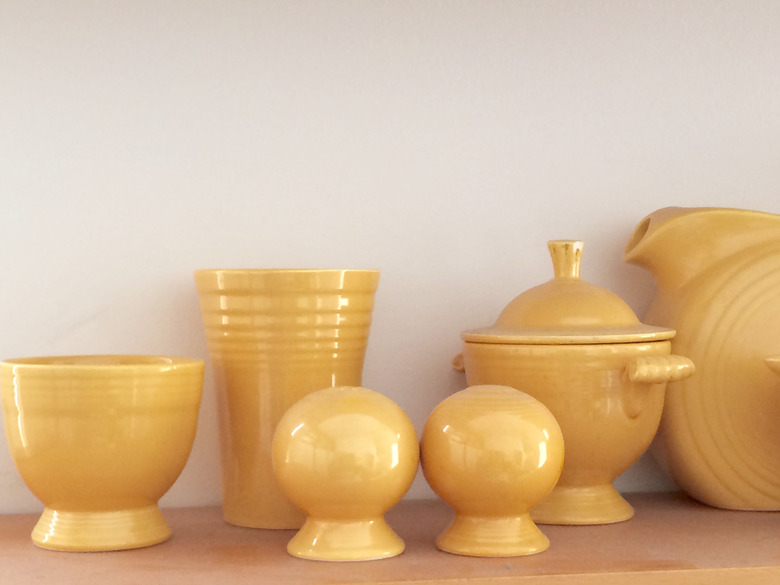How To Identify Fiesta Backstamps
We may receive a commission on purchases made from links.
Fiestaware is a colorful, American-made dinnerware, and old pieces are highly collectible. Learning to identify Fiestaware markings can help you determine if your piece is vintage.
Fiestaware was introduced in 1936 by the Homer Laughlin China Company, and it quickly became a classic. The bright colors and fun place settings were created as an antidote to the Great Depression. In 2020, the Homer Laughlin China Company was acquired by Steelite International, which renamed the manufacturer the "Fiesta Tableware Company."
Identifying Fiesta Markings by Year
Identifying Fiesta Markings by Year
You may be able to tell if Fiestaware dishes are vintage by looking at the markings on the bottom of the china piece. Fiestaware collectors consider pieces made between 1936 and 1972 as vintage.
If the label on the Fiestaware has the word "fiesta" in lowercase letters, it is probably vintage. If the marking is stamped in ink, it's definitely vintage. (The vintage stamp may also include the word "genuine" above the "fiesta" name.) If the label is imprinted into the piece, age is harder to determine. The lowercase logo suggests vintage, but some of the old molds have been used for modern pieces, making identification more difficult.
If the label spells "FIESTA" in all capital letters, it was probably made after 1986. If the label includes three or more additional letters, it was made after 1992. The letters identify the year the item was produced. Other Fiestaware markings that indicate whether the item is modern are the logo in a circular pattern or the letter "H" imprinted in the logo.
Using Color to Determine Fiestaware Age
Using Color to Determine Fiestaware Age
Over the decades, Fiestaware dishes have been made in more than 50 colors. The company regularly introduces new colors and retires old ones, so the color of a piece helps you determine its age. A few colors have been produced in two periods, so you need to check the markings to help determine the age. A few had limited runs of only a year or two. For example, if a piece is light green, it was made between 1936 and 1951. If it's antique gold, it was made between 1969 and 1972.
How Much Is Fiestaware Worth?
How Much Is Fiestaware Worth?
The value of a piece of Fiestaware varies based on age, color, shape, and condition. A complete set can be worth thousands of dollars. Age is a key determinant of value, with collectors prizing items from the product's early years. Collectors also prefer colors that are no longer in production over those that are still being produced. Much of the Fiestaware for sale is basic dinnerware, such as plates. Collectors pay more for rarer pieces, such as vases, teapots, and cake plates.
Today, Fiestaware is produced in a variety of patterns along with its famous solid, bright colors. However, in the 1930s, the company made striped bowls and plates that are quite rare and highly prized by collectors.
